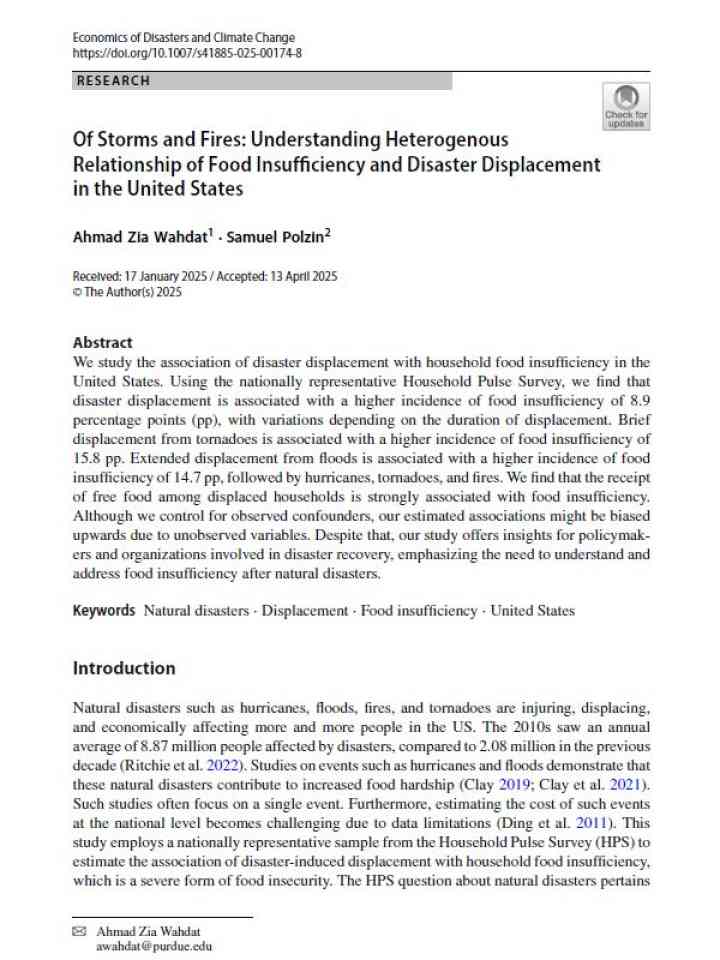Of storms and fires: Understanding heterogenous relationship of food insufficiency and disaster displacement in the United States
The authors study the association of disaster displacement with household food insufficiency in the United States. Using the nationally representative Household Pulse Survey, we find that disaster displacement is associated with a higher incidence of food insufficiency of 8.9 percentage points (pp), with variations depending on the duration of displacement. Brief displacement from tornadoes is associated with a higher incidence of food insufficiency of 15.8 pp.
Extended displacement from floods is associated with a higher incidence of food insufficiency of 14.7 pp, followed by hurricanes, tornadoes, and fires. The researchers find that the receipt of free food among displaced households is strongly associated with food insufficiency. Although they control for observed confounders, their estimated associations might be biased upwards due to unobserved variables. Despite that, their study offers insights for policymakers and organizations involved in disaster recovery, emphasizing the need to understand and address food insufficiency after natural disasters.
Explore further
